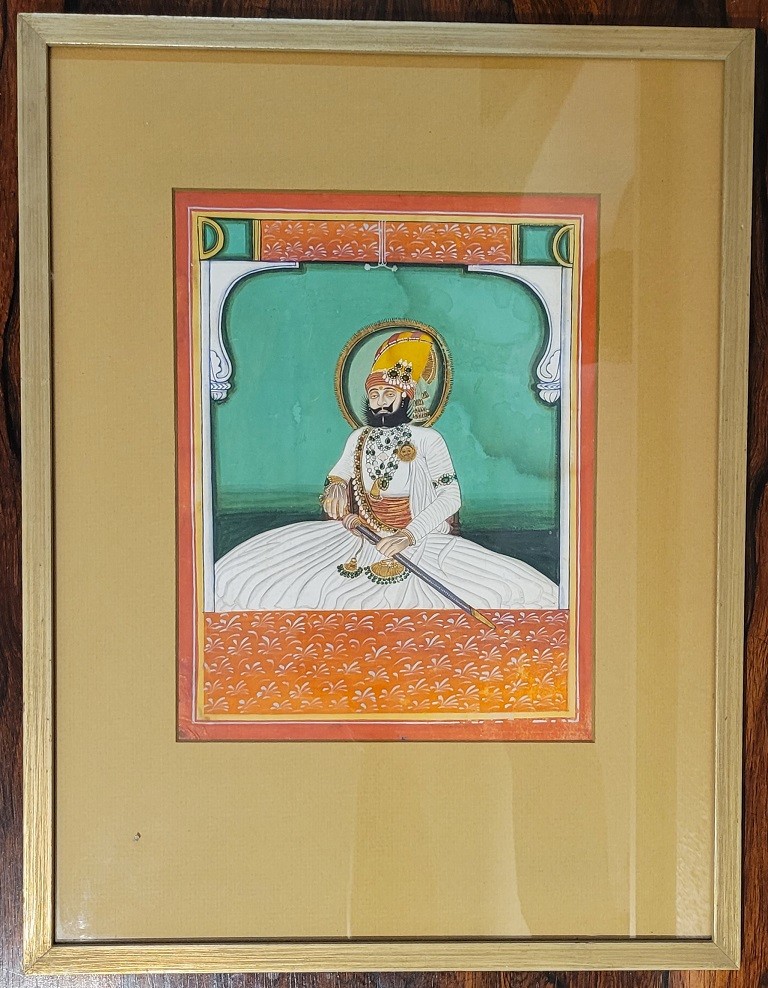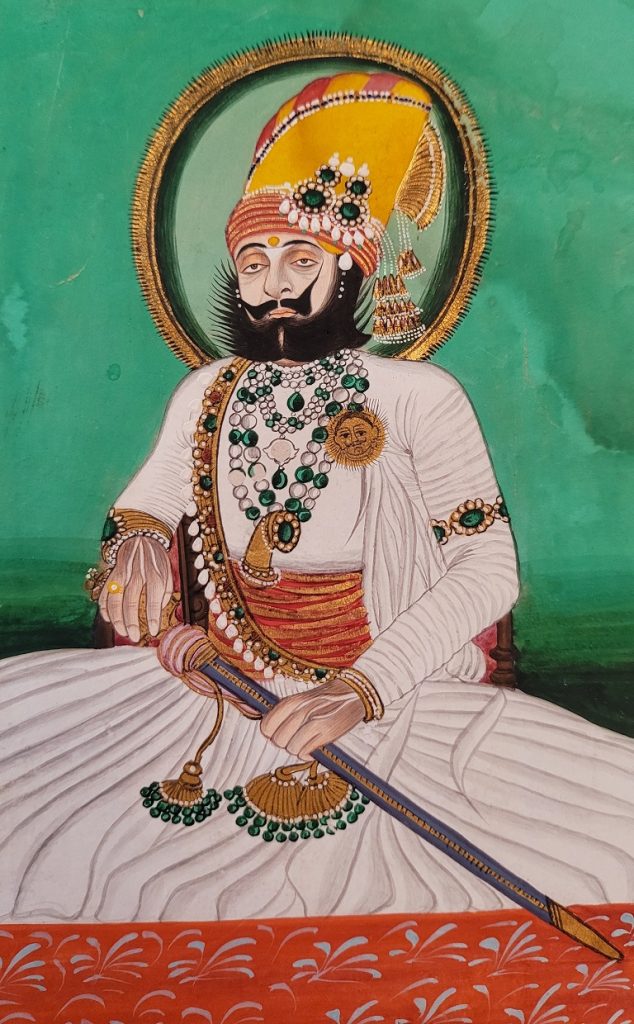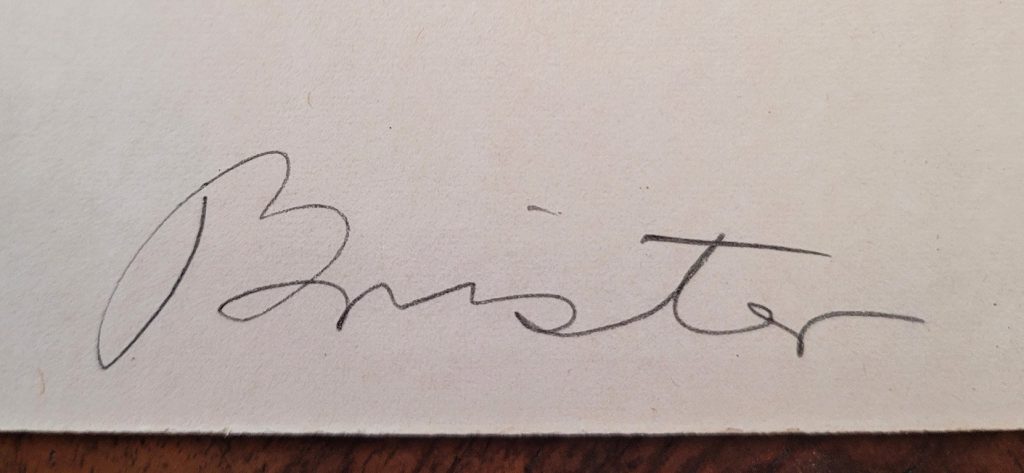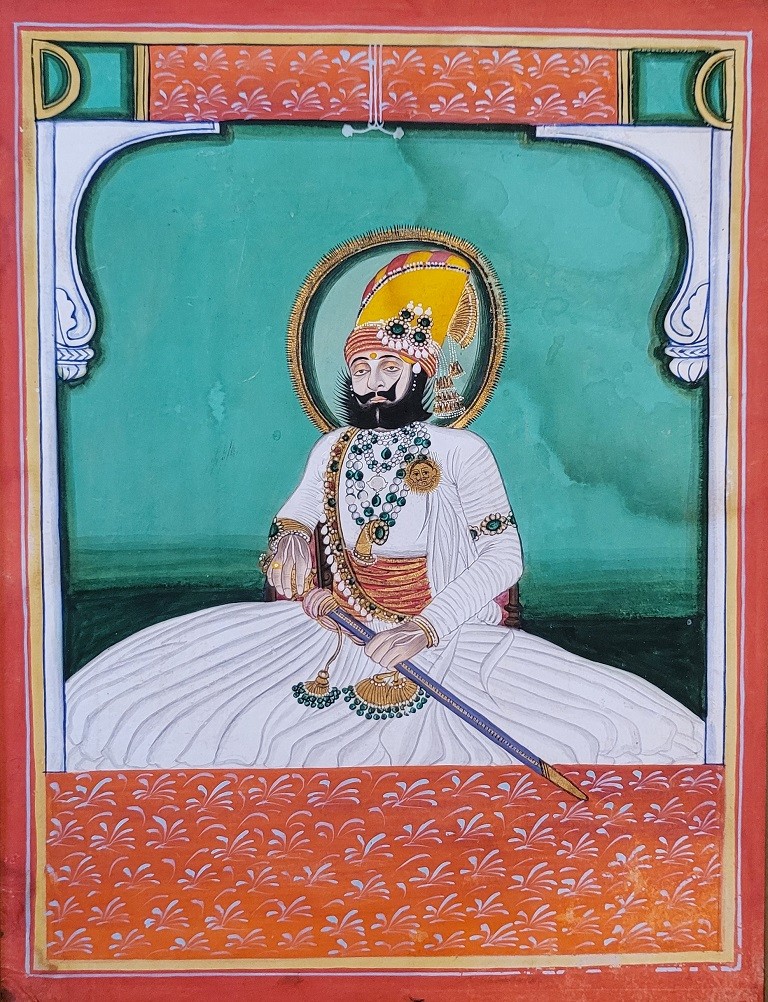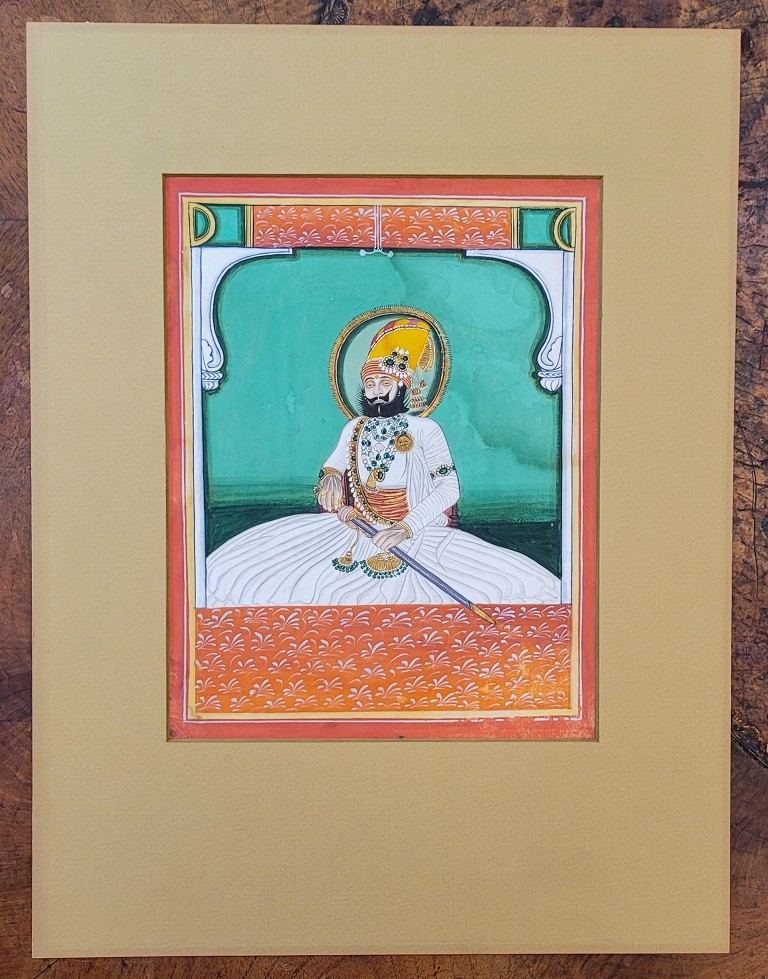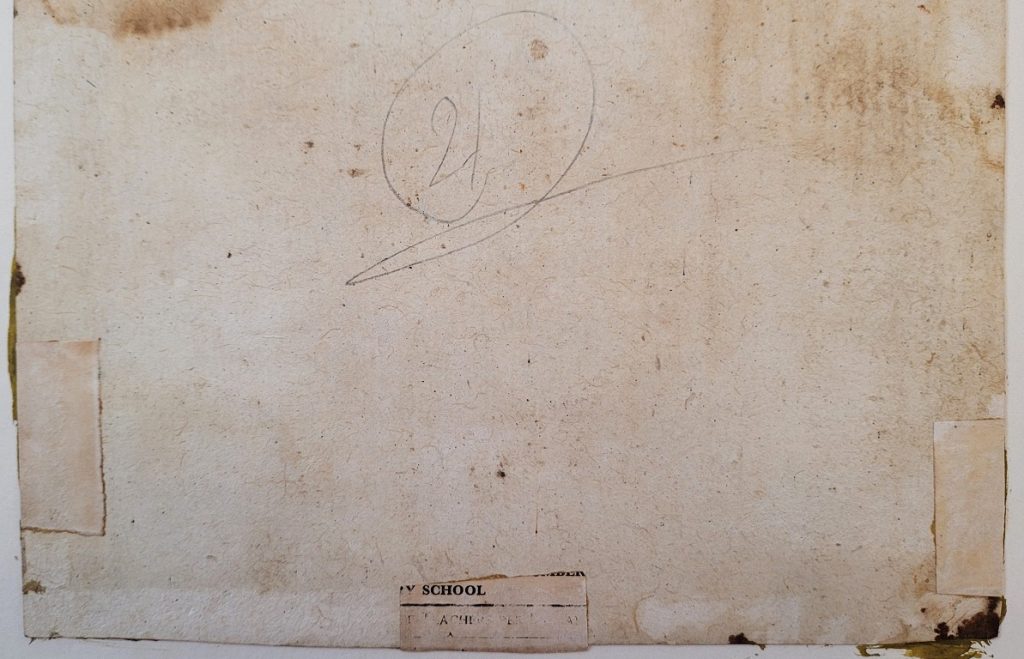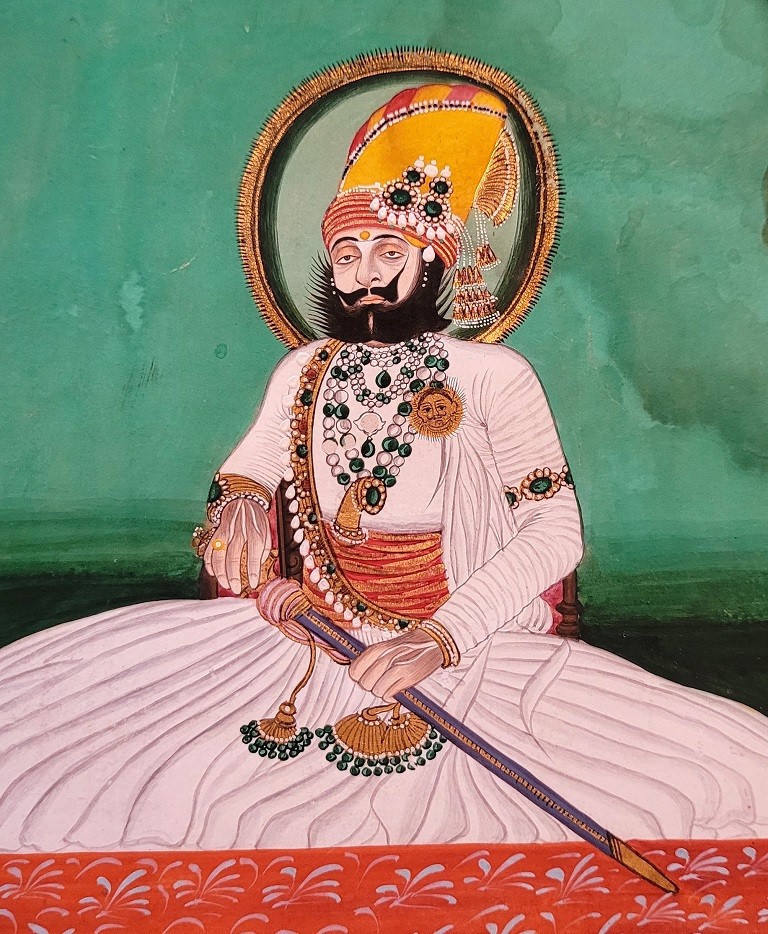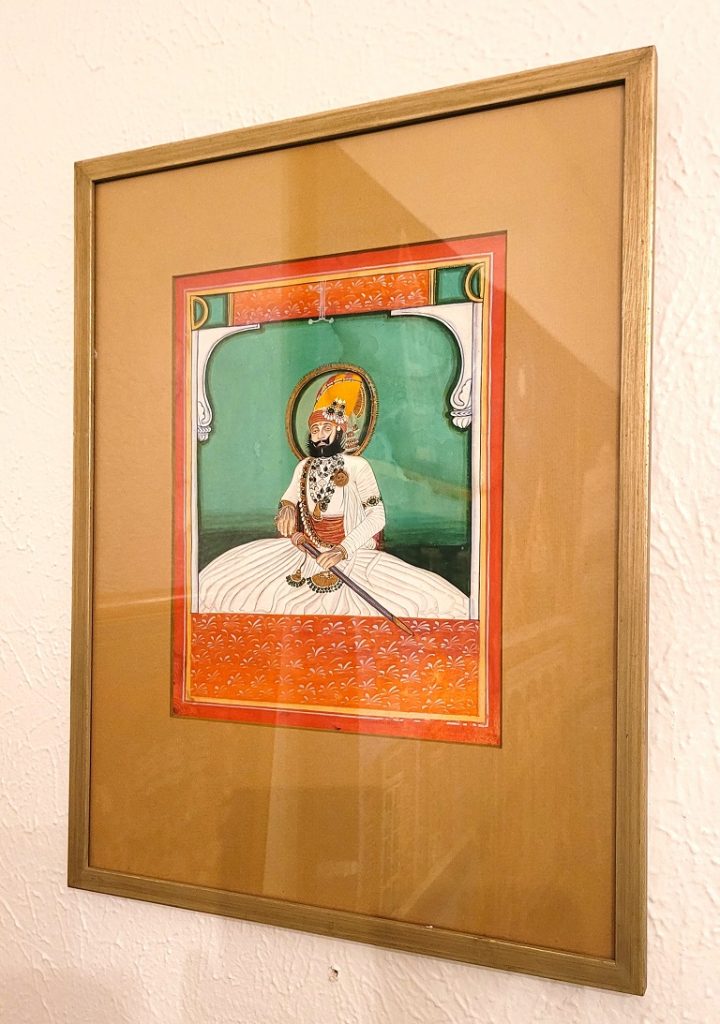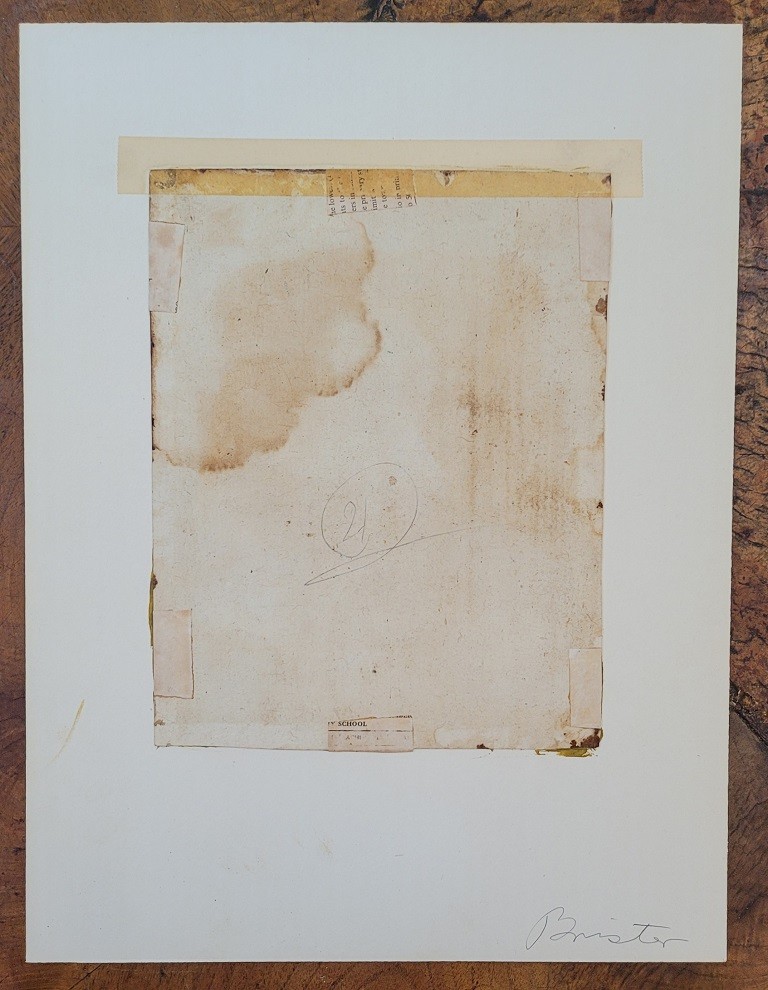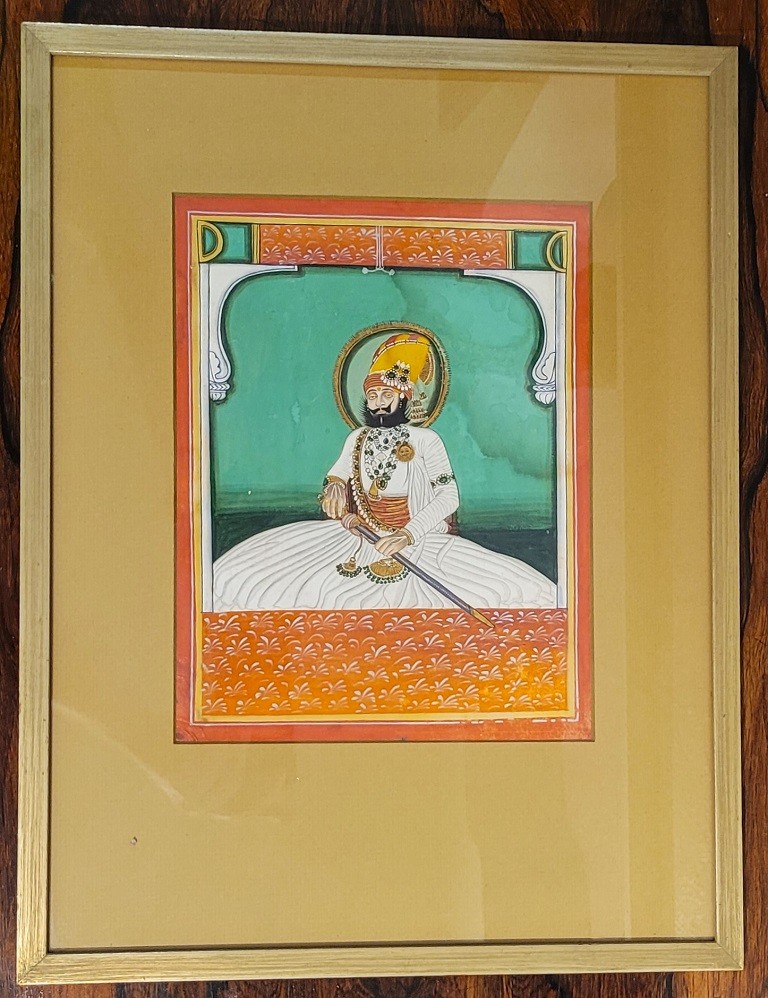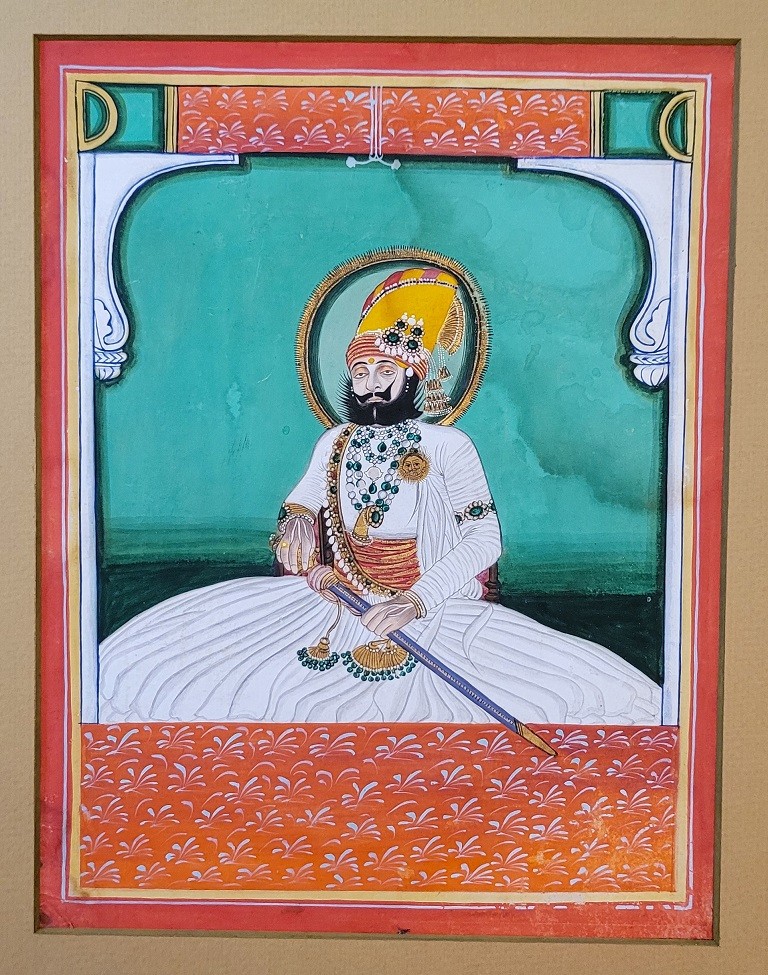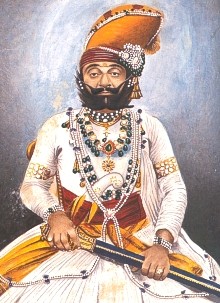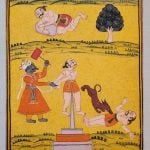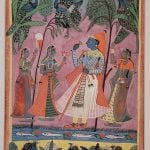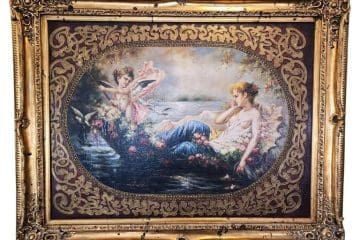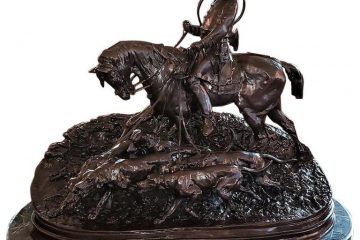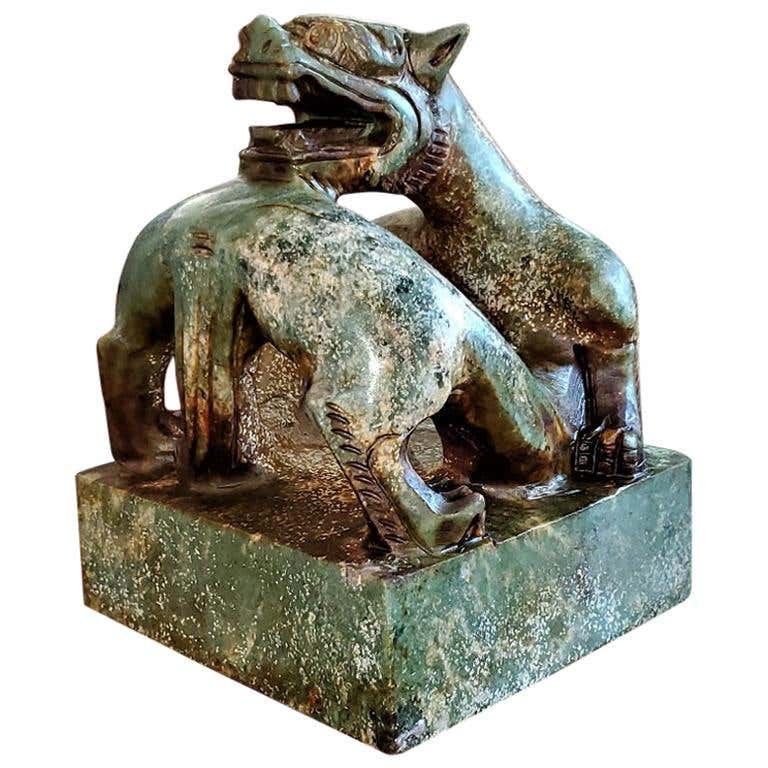19C Indian Miniature Portrait of Maharaja Takhat of Marwar
PRESENTING a VERY RARE 19C Indian Miniature Portrait of Maharaja Takhat of Marwar.
Hand-painted on paper … Gouache.
Indian circa 1860-70.
It features a portrait of Maharaja Takhat of Marwar.
Marwar (also called Jodhpur region) is a region of western Rajasthan state in North Western India. It lies partly in the Thar Desert. The word ‘maru’ is Sanskrit for desert. In Rajasthani languages, “wad” means a particular area. English translation of the word ‘marwar’ is ‘the region of desert.
The ‘Raj’ is in a seated pose, between decorative pillars, with a green background and what looks like a gold ‘halo’ behind his head, but is the back of the chair/throne he is seated upon.
He is extravagantly dressed in white robes, ceremonial sword in his lap, dagger in his sash and heavily bejeweled headdress and all over.
The painting has gold leaf highlights for the his jewelry, sword, dagger and sash banding and back of chair/throne.
It is framed and under glass in a vintage antique gold frame and has a tan matting. It was re-framed in Dallas in the late 20C by ‘Rust Picture Framing’ who operated in the late 1970’s at 3320 Kings Rd.
Takht Singh, GCSI (6 June 1819 – 13 February 1873) was first the regent (1839–1841) and the final Maharaja of Ahmednagar (Himmatnagar) 1841–1843 as a result of an agreement with the British. Once he ceded Ahmednagar (Himmatnagar) to Idar, he was recognized as Maharaja of Jodhpur (1843–1873).
He was born in Ahmednagar (Himmatnagar), the second son of Karan Singh and grandson of Sagram Singh, the Maharaja of Ahmednagar (Himmatnagar) from 1798 to 1835. He had little prospect of ascending the throne, yet after the death of his brother, Prithi Singh in 1839, he became the regent over the whole state and served as such until the birth of his brother’s son, Balwant Singh, who was proclaimed ruler at his birth. Takht Singh then became the new ruler’s regent and served as such until the death of his nephew on 23 September 1841, when he became the Maharaja of Ahmednagar (Himmatnagar).
However, two years into his reign in 1843, Man Singh, the Maharaja of Jodhpur died. He was persuaded by his widows to take the succession as he was a member of the Rathore Dynasty through his grandfather, Sagram Singh, the Maharaja of Idar, who himself was the son of Anand Singh, the first Maharaja of Idar and a younger son of Maharaja Ajit Singh, Maharaja of Jodhpur, however, he had to cede Ahmednagar (Himmatnagar) back to the state of Idar to be recognized in Jodhpur by the British.
So, on 29 October 1843, he ascended the gadi at the Sringar Chowki in Mehrangarh. Later in his life, he served loyal service to British at the time of Indian Mutiny of 1857 and in 1862 he received a sanad of adoption. During his life he was a chronic womanizer.;He married 30 wives. He died in Jodhpur on 13 February 1873 and was cremated at Mandore. He was succeeded by his eldest son Jaswant Singh II in Jodhpur, while his third son, Pratap Singh would go on to become the Maharaja of Idar. His first-born daughter, Kumari Chand Kanwar Bai Lal, would be married to Maharaja Sawai Ram Singh II, the Maharaja of Jaipur.
For More: Link: https://en.wikipedia.org/wiki/Takht_Singh
Gouache (/ɡuˈɑːʃ, ɡwɑːʃ/; French: [ɡwaʃ]), body color, or opaque watercolor is a water-medium paint consisting of natural pigment, water, a binding agent (usually gum arabic or dextrin), and sometimes additional inert material. Gouache is designed to be opaque.
19C Indian Miniature Portrait of Maharaja Takhat of Marwar.
Provenance: From a Quality Dallas Estate.
Dimensions: In Frame: 17 x 13 in
Visible Image Size: 9.8 x 7.75 in
Condition: Fair original condition. The detail and colors are still very vibrant, but there is evidence of a water stain on the top right background and one spot on the mid-left background. Damage reflected in price.
SALE PRICE NOW: $1,200


